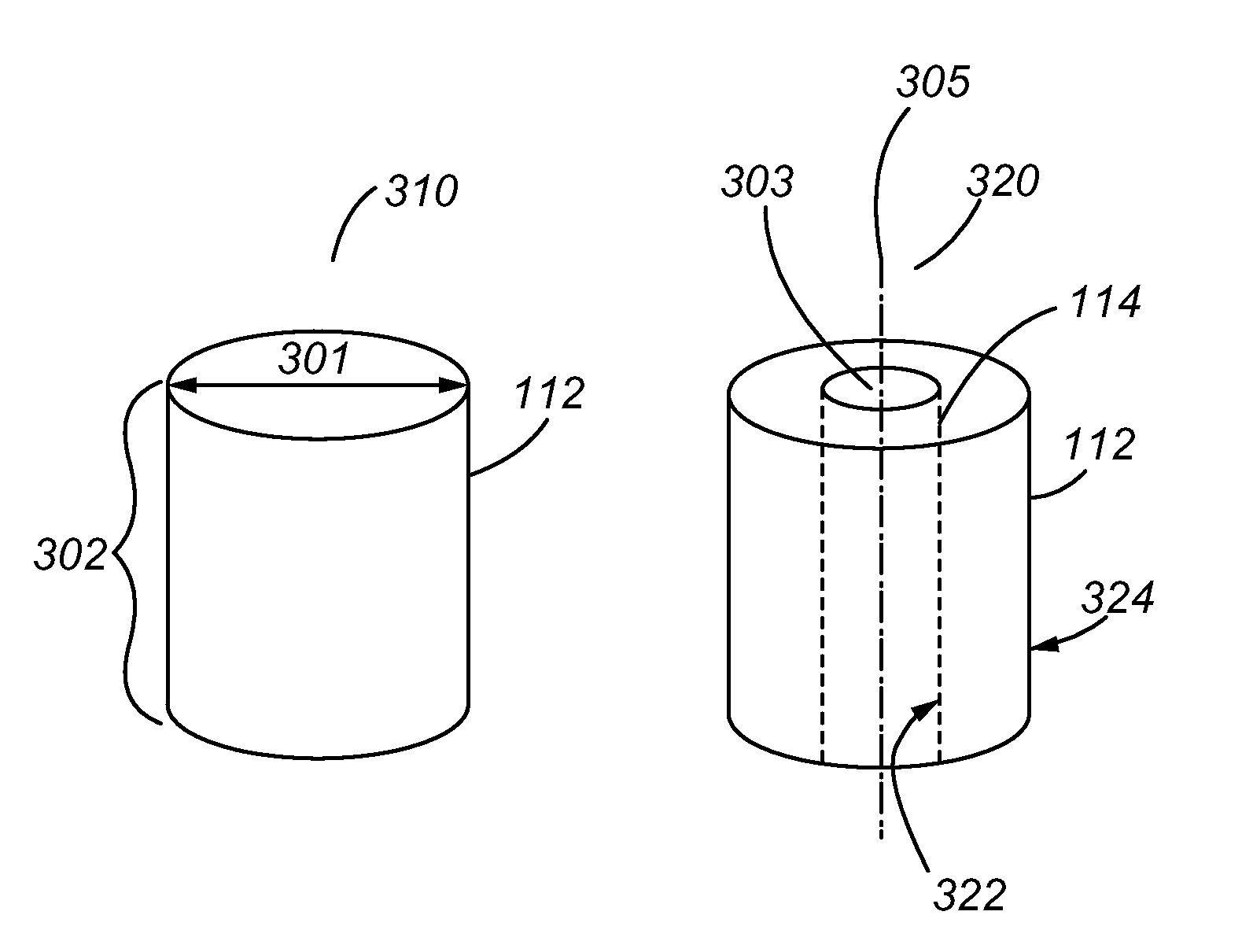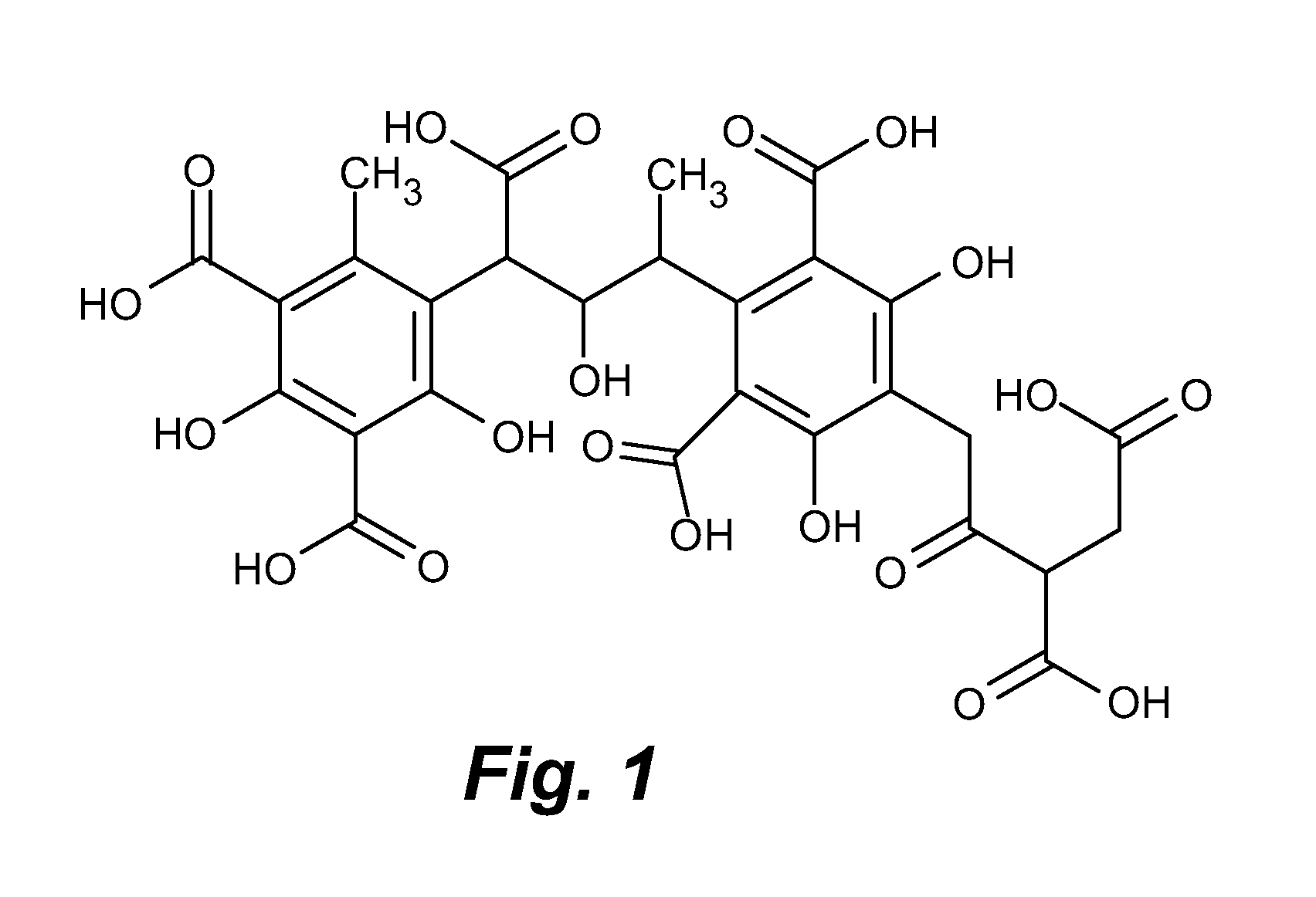Porous and durable ceramic filter monolith coated with a rare earth for removing contaminants from water
a ceramic filter and rare earth technology, applied in the direction of filtration separation, other chemical processes, separation processes, etc., can solve the problems of unsuitable human consumption of water supply, limited access to clean air and potable water, unhealthy air breathing, etc., to reduce one or more biological contaminants, reduce the arsenic level, and reduce the amount of contaminants
- Summary
- Abstract
- Description
- Claims
- Application Information
AI Technical Summary
Benefits of technology
Problems solved by technology
Method used
Image
Examples
example i
[0124]Four filters each containing 25 grams of ceria-coated alumina were challenged with 30 liters of NSF P231 “general test water 2” at a pH of about 9, containing 20 mg / L tannic acid. The ceria-coated alumina pre-filters decreased the oxidant demand of the water from about 41 ppm (NaOCl) to an average of 12 ppm (NaOCl). The oxidant demand of the water treated with the ceria-coated pre-filters decreased by about 75%. This decreased demand translates to a decrease in the amount of halogenated resin necessary to produce a 4 Log10 virus removal. FIG. 4 is a graphical representation of the retention of humic acid on 20 g of ceria-coated alumina challenged by 6 mg / L and a 10 min contact time.
example ii
[0125]Ceria absorbent media was shown to be effective for removing large amounts of natural organic matter, such as humic and / or tannic acids. The organic material was removed at fast water flow rates and small contact times of less than about 30 seconds over a large range of pH values. The organic matter was removed from an aqueous solution with ceria oxide powders having surface areas of about 50 m2 / g or greater, about 100 m2 / g or greater, and about 130 m2 / g or greater. Furthermore, the organic matter was removed from an aqueous stream with cerium oxide-coated alumina having a surface area of about 200 m2 / g or greater. Moreover, cerium oxide coated onto other support media or agglomerated cerium oxide powder having a surface area of about 75 m2 / g or greater removed humic and / or tannic acids from the aqueous stream. In each instance, the cerium containing material effectively removed the organic matter from the aqueous stream to produce a clear colorless solution.
[0126]However, the...
example iii
[0127]A 55 gram diatomite filter was loaded with 11 grams of CeO2, by impregnating the filter with a cerium nitrate aqueous solution and calcining the impregnated filter to form CeO2. The diatomite filter was impregnated with the cerium nitrate solution from about an hour to about 24 hours to substantially saturate the filter with the cerium nitrate solution. The impregnated filter was dried under warm conditions to evaporate the water from the cerium nitrate impregnated filters. The dried filters were calcinated under two different conditions.
[0128]One set of dried filters were calcinated in an oxidizing atmosphere for 1 hour at about 500 degrees Celsius. The filters were loaded with about 18 grams of CeO2, the CeO2 accounted for about 30% of mass of the coated filter. The filters had a flow rate of about 600 ml / minute at 50 psi, which was about a 30% reduction in the flow rate compared to the un-coated filters. The initial vial contaminant challenge showed 100% efficacy for viral ...
PUM
| Property | Measurement | Unit |
|---|---|---|
| Temperature | aaaaa | aaaaa |
| Temperature | aaaaa | aaaaa |
| Pore size | aaaaa | aaaaa |
Abstract
Description
Claims
Application Information
 Login to View More
Login to View More - R&D
- Intellectual Property
- Life Sciences
- Materials
- Tech Scout
- Unparalleled Data Quality
- Higher Quality Content
- 60% Fewer Hallucinations
Browse by: Latest US Patents, China's latest patents, Technical Efficacy Thesaurus, Application Domain, Technology Topic, Popular Technical Reports.
© 2025 PatSnap. All rights reserved.Legal|Privacy policy|Modern Slavery Act Transparency Statement|Sitemap|About US| Contact US: help@patsnap.com



